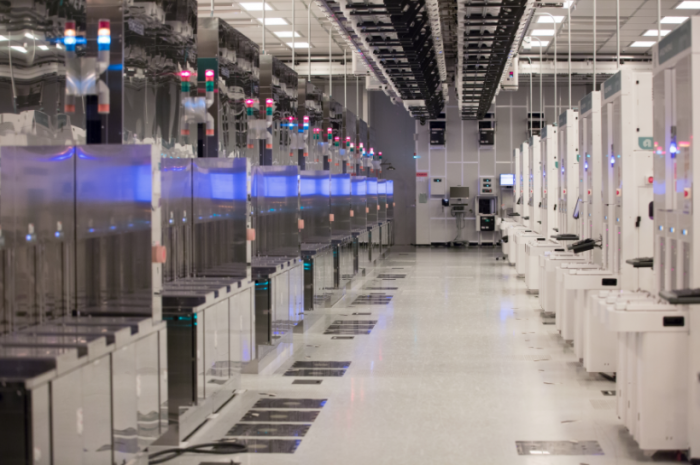The U.S. Chip Industry Is Growing in China
In a move that may upset the Trump administration, California-based chip maker GlobalFoundries has announced that it plans to build a new fabrication plant in China at a cost of $10 billion.
The move is part of an expansion strategy that will include increasing production of its semiconductors in facilities in the U.S., Germany, and Singapore. But the U.S. facilities are likely to see the most modest growth.
The new Chinese plant, which will be built in the city of Chengdu, is quite another story. It’s expected to produce up to 85,000 silicon wafers per month by the end of 2019, according to AnandTech, making it one of the company’s highest-capacity plants.

The New York Times suggests that Chinese government initiatives are to thank for the new plant. Heavy investment in the semiconductor industry and new initiatives that encourage domestic companies to use chips built inside Chinese borders mean that it’s a good time to set up shop in China.
Several Asian tech firms have recently stated that they plan to set up manufacturing operations in the U.S. in the coming years. In another article, though, the Times suggests that CEOs of Chinese companies may have taken a cue from Trump’s style of business: make big promises, even if they’re unlikely to come to full fruition.
The GlobalFoundries news serves as a reminder that whatever Trump may say, the East still exerts a powerful appeal. It’s understandable: there’s a talented workforce, reasonably priced labor, and a healthy market to boot.
The White House knows that this is a problem. Late last year, the Obama administration put together a new task force of industry experts in a bid to help home-grown semiconductor companies battle overseas challengers and expand their fabrication operations in the U.S. But there’s still, clearly, a way to go.
(Read more: AnandTech, New York Times, “China’s Bid to Dominate the Chip Industry Is in Danger of Falling Short,” “Made in America: Asian Tech Giants Say They Will Expand U.S. Operations Under Trump,” “Can the White House Make America’s Chip Industry Great Again?”)
Keep Reading
Most Popular
Large language models can do jaw-dropping things. But nobody knows exactly why.
And that's a problem. Figuring it out is one of the biggest scientific puzzles of our time and a crucial step towards controlling more powerful future models.
The problem with plug-in hybrids? Their drivers.
Plug-in hybrids are often sold as a transition to EVs, but new data from Europe shows we’re still underestimating the emissions they produce.
Google DeepMind’s new generative model makes Super Mario–like games from scratch
Genie learns how to control games by watching hours and hours of video. It could help train next-gen robots too.
How scientists traced a mysterious covid case back to six toilets
When wastewater surveillance turns into a hunt for a single infected individual, the ethics get tricky.
Stay connected
Get the latest updates from
MIT Technology Review
Discover special offers, top stories, upcoming events, and more.